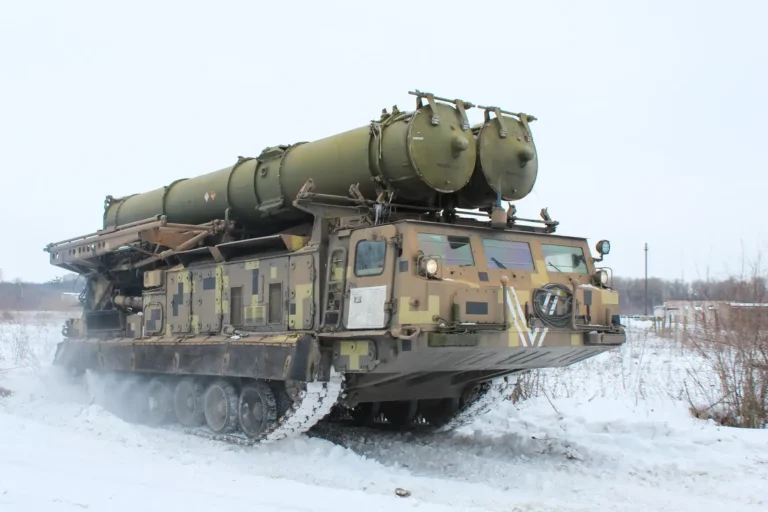Follow Us:

Share
The F-14 Tomcat, one of the most iconic fighter jets in U.S. Navy history, played a crucial role in military aviation for over three decades.
Designed as a carrier-based air superiority fighter, the Tomcat gained fame for its variable-sweep wings, long-range missile capabilities, and superior dogfighting skills. Although it participated in multiple conflicts, its role in Operation Desert Storm was somewhat restricted.
Despite this, the legacy of F-14 Tomcat includes a poignant moment in history—the only confirmed combat loss of an F-14 during its service with the U.S. Navy.
On January 21, 1991, Iraqi forces successfully shot down a Tomcat during a tense engagement, marking a rare moment when this powerful jet fell to enemy fire.
Following Iraq’s invasion of Kuwait on August 2, 1990, the United States, along with a coalition of 35 nations, launched Operation Desert Shield to prevent further aggression.
After months of diplomatic efforts failed, the conflict escalated into Operation Desert Storm on January 17, 1991, a full-scale military offensive to drive Iraqi forces out of Kuwait.
As part of this massive operation, U.S. Navy F-14 Tomcats were deployed to patrol the skies, escort allied bombers, and defend coalition naval assets in the Persian Gulf.
Stationed aboard aircraft carriers, Tomcats conducted combat air patrols (CAPs), ensuring that Iraqi fighter jets could not disrupt coalition operations.

While the F-14 was originally designed for air-to-air superiority, its role in Desert Storm was primarily defensive. Unlike U.S. Air Force jets, such as the F-15 Eagle, which actively engaged in dogfights, the Tomcats were mostly assigned to escort and surveillance duties.
This was due in part to their inability to autonomously identify hostile aircraft at long range, forcing them to rely on clearance from airborne command units before engaging enemy targets.
Despite its limited combat engagements, the F-14 Tomcat proved instrumental in surveillance missions, particularly in tracking and identifying Iraqi Scud missile launch sites.
It carried the Tactical Airborne Reconnaissance Pod System (TARPS), allowing U.S. forces to locate enemy positions and gather intelligence.
However, even with these advantages, the Tomcat saw only one recorded air-to-air kill in the entire war—a Mi-8 transport helicopter shot down on February 6, 1991.
On January 21, 1991, an F-14B Tomcat from VF-103 was on an escort mission over Iraq when it encountered a deadly threat. The aircraft was piloted by Lieutenant Devon Jones, with Lieutenant Lawrence Slade serving as the Radar Intercept Officer (RIO).

As the Tomcat flew through hostile airspace, an Iraqi surface-to-air missile (SAM)—believed to be a Soviet-made SA-2 Guideline—was launched in its direction.
Jones spotted the missile approaching through the clouds and immediately attempted an evasive maneuver, increasing speed and altering altitude.
However, the missile exploded near the tail section, causing catastrophic damage and sending the aircraft into a violent spin. With no chance of regaining control, Jones and Slade were forced to eject.
After ejecting, Jones landed safely in the Iraqi desert and managed to establish radio contact with U.S. forces. A rescue mission was swiftly launched, involving an A-10 Warthog and an H-53 helicopter, which successfully extracted Jones and transported him to Saudi Arabia for medical treatment.
However, Slade was not as fortunate. He was captured by Iraqi forces and taken to Baghdad, where he was imprisoned and tortured for months alongside other captured airmen.
Reports indicate that Slade suffered severe back injuries and internal damage due to the brutal treatment he endured as a prisoner of war. It was only in March 1991, after the war ended, that he was finally released.
This incident remains the only confirmed case of an F-14 Tomcat being shot down in combat while serving with the U.S. Navy. While a few Tomcats were lost due to accidents and operational mishaps, none had previously fallen to enemy fire.
Although the F-14 Tomcat’s role in Desert Storm was not as combat-intensive as other aircraft, it continued to serve in later conflicts. During the Bosnian War in the 1990s, Tomcats were used for precision strikes and reconnaissance missions.
They also participated in NATO’s bombing campaign in Yugoslavia in 1999. As the War on Terror unfolded in the early 2000s, F-14s were deployed extensively in both Afghanistan and Iraq, delivering GPS-guided JDAM bombs with high precision.
Despite its continued service, the Tomcat’s limitations in modern warfare led to its gradual retirement. The rise of the F/A-18E/F Super Hornet, a more versatile and technologically advanced fighter, prompted the U.S. Navy to phase out the F-14.
The final combat mission of an F-14 occurred in 2006 when an aircraft from the USS Theodore Roosevelt dropped a laser-guided bomb on an Iraqi target. By September 2006, the F-14 Tomcat was officially retired from U.S. service, marking the end of an era for one of the most famous fighter jets in military history.
While the Tomcat no longer flies for the U.S. Navy, its legendary status lives on, particularly in Iran, which still operates a fleet of F-14s acquired before the 1979 revolution. The aircraft’s combat record, cinematic fame in Top Gun, and its unforgettable role in naval aviation history ensure that the legacy of F-14 Tomcat remains intact.
Share
Defense Feeds is publication focusing on informing, engaging, and empowering the world by providing accurate information from defense technology.
Powered by Defense Feeds © 2025 – All rights reserved.